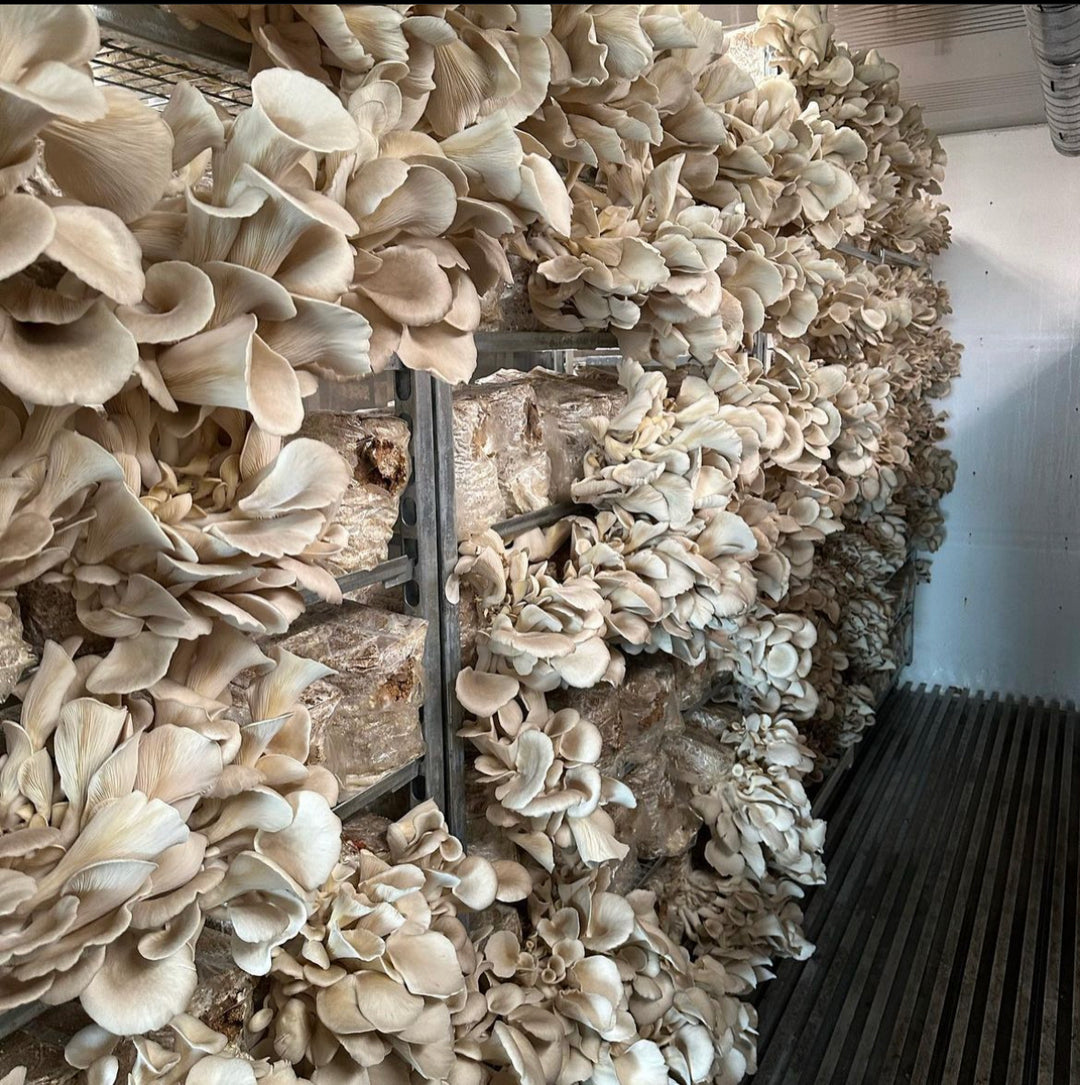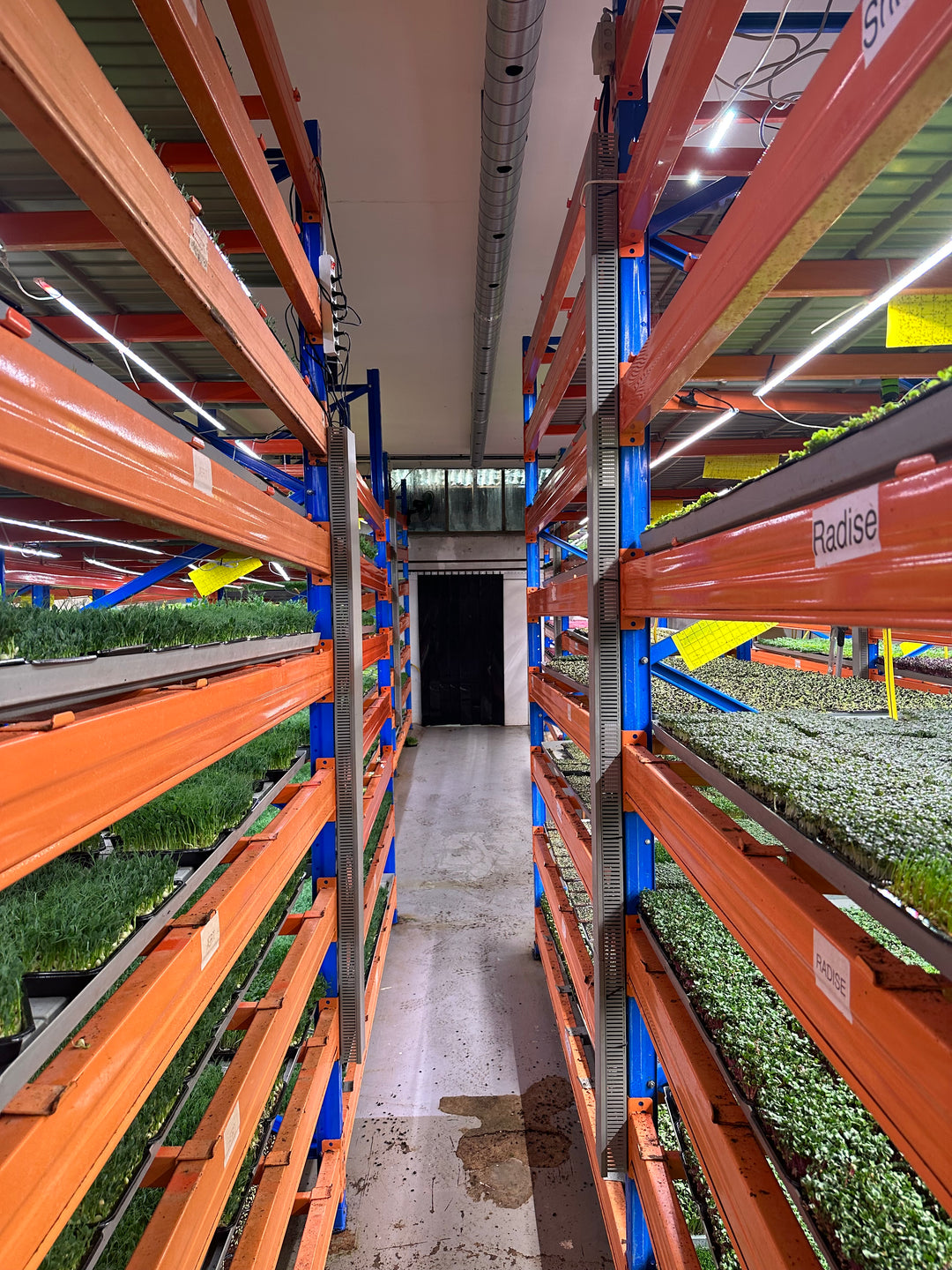List of what you need to begin growing your microgreens journey

https://www.youtube.com/watch?v=WUz5CuBcZK0&t=24s
For many new growers it can be quite a jungle to figure out what you will need to begin your journey into growing microgreens and growing indoors. There are so many varieties of different seeds, growlights, tray sizes and growmediums that you can experiment with. Many combinations are able to work and it is difficult to know what makes sense for your way of growing in your market.
All markets are different and the requirements in each market are also unique. You can change the way your microgreens taste by the type of light you are growing with, but the variety of seeds will also influence what your product will taste like. If you grow with a white light you will have a more sweet taste than if you grow with a blue and red light. Blue and red are more efficient in getting higher yields using less electricity but it is also more damaging to your eyes when you work in that type of light. You need to explore the different options for optimal growth for your setup but investing in a quality solution will get you further if you are looking for long ledterm growth.
LIGHT
For a plant to grow it will need light to produce photosynthesis, your microgreens can grow under the light of the sun but there are also alternatives to the sun. In the past, most indoor microgreens farmers have been growing with t8 light tubes. The initial investment is very low since they are affordable, but the tubes need to be changed every 6-12 months because they lose efficiency fast. The downsides of these lights are the possibility of glass breaking and gas being emitted into your growroom, the gas is poisonous and glass in your microgreens will only give you the danger of a lawsuit from your customer, the damage done by an event like this will ruin your reputation, if not completely, it will set you back much more than what you saved from buying low quality equipment. In recent years the LED growlight technology has been getting so good that the investment you make in these lights will be back in no time, and the quality light you are able to get at low cost is very high. You can grow under the sun in a greenhouse or outside most times of the year and there will be no energy expenses when you are growing under the sun. But this is not possible all year round in most places, so if you are looking for consistency in quality and availability then we recommend you grow using LED growlight. LED growlight is a jungle by itself but if you want and easy solution that we found for you, then you can go to our website: www.nordichydro.com here we already have tested and evaluated most LED growlight, since we have been working with LED growlights for over a decade and will only sell quality lights, that will get you good results and is using the proper spectrum for optimal plant growth.
Seeds
The seeds you choose are very important that they are the highest quality possible. If you choose cheap seeds from unstable suppliers who do not care about the quality, they only want to make as much profit as possible. Then you will encounter many problems. We are often asked about using hydrogen peroxide and we have never understood the need of using this if the quality of the seeds and growing methods are right. It takes a certain amount of mastery to get to that point in understanding the right humidity and quality control but so far we have never been using hydrogen peroxide for any of our own seeds.
Trays
Growtrays for microgreens can be many different sizes and with different materials. If you grow for harvesting and packaging your microgreens then 1020 trays like our microgreen trays 56 x 28 cm growtrays would be a perfect fit. If you grow for living trays then smaller trays is also a great way of growing your microgreens. You can grow living trays in plastic but also use biodegradable trays that can degrade naturally. Living trays and cut microgreens is the usual way we see people grow, but there are also smaller growth systems that can irrigate themselves like our microgrow garden that you find on www.nordichydro.com. This is a perfect system for home consumption where it is not everyday you are able to water the trays but the water from a small reservoir will soak up into the trays as they naturally dehydrate.
Growmedium
There are plenty of different types of grow mediums, among them are: Hemp matts, soil, coco matts, coco coir, bamboo fiber, cellulose, peat moss and I have even heard about reused excess carpet material from production of carpets. You can also grow on plastic filter mats that are reusable. It is important the growmedium can contain and keep moisture so your seeds stay soaked and won't dry out. There are advantages and disadvantages to all grow mediums for microgreens production, for example will microgreens grown in soil contain more nutrients than microgreens grown in neutral grow mediums and are therefore better when growing for a packaged product that is cut and put in a container. Experiment with different growmediums to find the best solution for your needs and the way you wish to grow your products.
Fertilizer
Fertilizers can be used to enhance your growth of your microgreens as well, there are mineral-based and organic fertilizers most commonly used. It all depends on how you grow your microgreens but the stronger your growlights are, the more nutrients your plants will need, but they will also grow bigger and faster. Growing with organic fertilizer will smell and organic fertilizer will not have a good shelf life, so you need to make sure the amount you buy will be spent within 1 year for optimal results. If you are growing with a mineral based fertilizer is it usually minerals mixed with water so you need to be careful your fertilizer do not crystallize too much after long periods of shelf life, but mineral fertilizers will have a longer shelf life of 2-5 years if stored properly in not too cold or too hot climate.
Shelves
Shelves can be any type of shelf you choose but limiting yourself to something that can withstand high humidity is a good idea. Wood and growrooms typically do not go well together since it will rot fast in a high humidity environment, and using prepared wood with chemicals is also not a good idea since it can become poisonous in a closed environment that is too humid. Try finding metal shelves that have been galvanised or painted to withstand the high humidity.
Packaging
Packaging in plastic sourced from plant material is a great way to use something that is more environmental friendly, when you want to deliver your microgreens as a cut product then small clamshells is a great way to do this in but make sure it is foodgrade materials that you are allowed to use.
In order to succeed with selling your microgreens you need 3 pillars of experience:
Getting the right equipment and setting up your growroom.
Learning how to grow a consistent product of beautiful microgreens that does not fail 100% of the time.
Sales training and understanding how to get and retain customers so you can keep growing your business. If you lose your customers then you lose future sales and will have a hard time getting those customers back.


